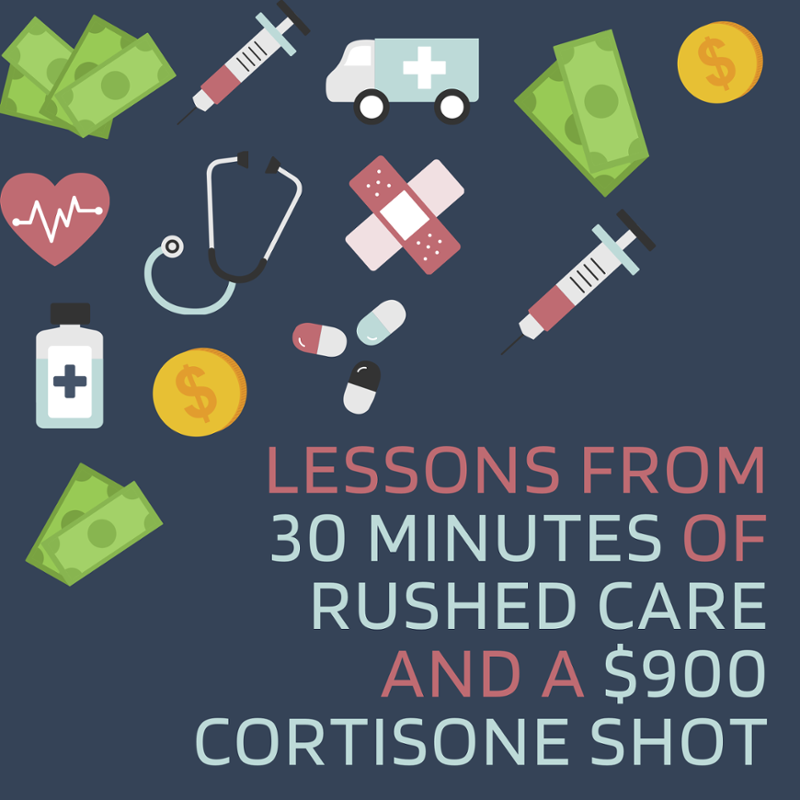When I started my career at The Karis Group, I had no idea how complicated the healthcare system in America is. What I knew was that healthcare is necessary, and healthcare is expensive. As I gained experience, it quickly became evident that there are various policies in place that allow for excessive charges, price inflation, and for providers and payers to leave the patient with the responsibility for hundreds of thousands of dollars of medical debt.
One of the things that surprised me the most wasn’t just the price inflation of major surgeries, but how even bills that were $1,500 or less are often twice the amount of what they should be.
Typically, these bills accumulate from standard doctor appointments, and they’re often the bills we pay in order to meet our deductible. What we often don’t realize is that although they seem relatively small in comparison to bills acquired through surgeries and procedures, they’re often much higher than what they should be.
Recently, a close relative of mine experienced this exact scenario, and I think it would be helpful to dissect their experience and learn from it. It was time for their annual checkup with their trusted family doctor of over ten years. Naturally, they had compiled a list of questions they wanted to discuss with their doctor - one of the main concerns being some extreme pain they were experiencing in their foot. When they got to the doctor's office, here’s what they experienced:
-
They were rushed through the appointment in about 15 minutes.
-
The had about 30 seconds to discuss their list of concerns.
-
Upon hearing the word “heel pain” their doctor immediately referred them to a podiatrist.
I wish I could say that the appointment with their podiatrist went better, but:
-
Again, they were rushed through the appointment in 15 minutes.
-
Upon hearing “heel pain” the podiatrist immediately decided a cortisone shot would do the trick (please note this was without doing any type of physical examination of the heel.)
-
Trusting their family doctor who referred them to this podiatrist, naturally, they trusted the podiatrist and complied with his suggestion. Because why would your trusted doctor refer you to someone if they don't trust and personally recommend them?
Two weeks after seeing the podiatrist, a few more things happened:
-
The cortisone shot wore off and the pain persisted.
-
They received a bill in the mail showing their total for that appointment was $1,300, and $900 of it was for the cortisone shot.
They scheduled an appointment with a conservative care doctor for their heel pain and got a clearer diagnosis, appropriate treatment, and saw improvement in 60 minutes.
It took two appointments and a total of 30 minutes for them to experience the various avoidable pitfalls of our healthcare system. In comparison to some of the medical bill horror stories we often hear about, the $1,300 bill is a much easier pill to swallow. But, if you look up the cash-pay price of a cortisone shot on a website like Healthcare Blue Book, you might be surprised to find the price for a shot actually ranges from $80-$100. They were literally charged ten times what the price should have been.
So what are the solutions?
-
Stay educated. Always do your research and know what your options are.
-
Want a doctor that’s dedicated to your care and won’t be on a 15-minute time limit? Check out Direct Primary Care Doctors.
-
Seek out conservative care first if that’s a possibility for your issue. Different types of physical therapy could potentially resolve your issue in less time and with less money (checkout clinics like Arroisti, they do exactly that.)
“Be the change you wish to see in the world,” might be the world’s most overused quote, but for so many of the issues we face, it’s 100% the answer. Healthcare isn’t going to change unless we educate ourselves, know our options, and make smart care decisions.
Curious what allows hospitals to overcharge and why insurers are willing to pay? Read about Medical Loss Ratios here.





